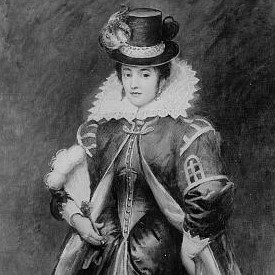Pocahontas
In honor of Native American Heritage Month

November 13, 2020
There’s many of us that know Pocahontas as the American Indian princess shown in the Disney movie, but do you know her history? The true story about Pocahontas was never really explored till after her death. Disney left out a lot of small important details.
Pocahontas was born in 1596, and was daughter of the powerful Chief Powhatan, the paramount chief of a network of tributary tribes. Her real name was Amonute, and she also had the more private name Matoaka. Pocahontas was her nickname, which depending on who you ask means “playful one” or “ill-behaved child.” John Smith had written about her in 1607 explaining how she rescued him when he was kidnapped by her brother “his head was placed on two stones and a warrior prepared to smash his head and kill him. But before the warrior could strike, Pocahontas rushed to Smith’s side and placed her head on his, preventing the attack. She was only “ age 11 or 12” but the way Smith wrote about Pocahontas was way different than the life she lived.
Smith might have misinterpreted what was actually a ritual ceremony or even just lifted the tale from a popular Scottish ballad. It’s thought that Pocahontas married an Indian named Kocoum in 1610. Afterwards, she avoided the English until 1613 when she was lured onto the English ship of Captain Samuel Argall and kidnapped during the First Anglo-Powhatan War, and held for ransom by the Colonists during hostilities. During her captivity, she was encouraged to convert to Christianity and was baptized under the name Rebecca. She married tobacco planter John Rolfe in April 1614 aged about 17 or 18, and she bore their son Thomas Rolfe in January 1615.
In March 1617, Rolfe and Pocahontas boarded a ship to return to Virginia, but they sailed only as far as Gravesend on the river Thames when Pocahontas became gravely ill. She was taken ashore and died at the approximate age of 21. It is not known what caused her death, but theories range from pneumonia, smallpox, or tuberculosis to her being poisoned. According to Rolfe, she died saying, “all must die, but tis enough that her child liveth”.
Pocahontas’s funeral took place on March 21, 1617, in the parish of St George’s Church, Gravesend. Her grave is thought to be underneath the church’s chancel, though that church was destroyed in a fire in 1727 and its exact site is unknown. Her memory is honored with a life-sized bronze statue at St. George’s Church by William Ordway Partridge.

